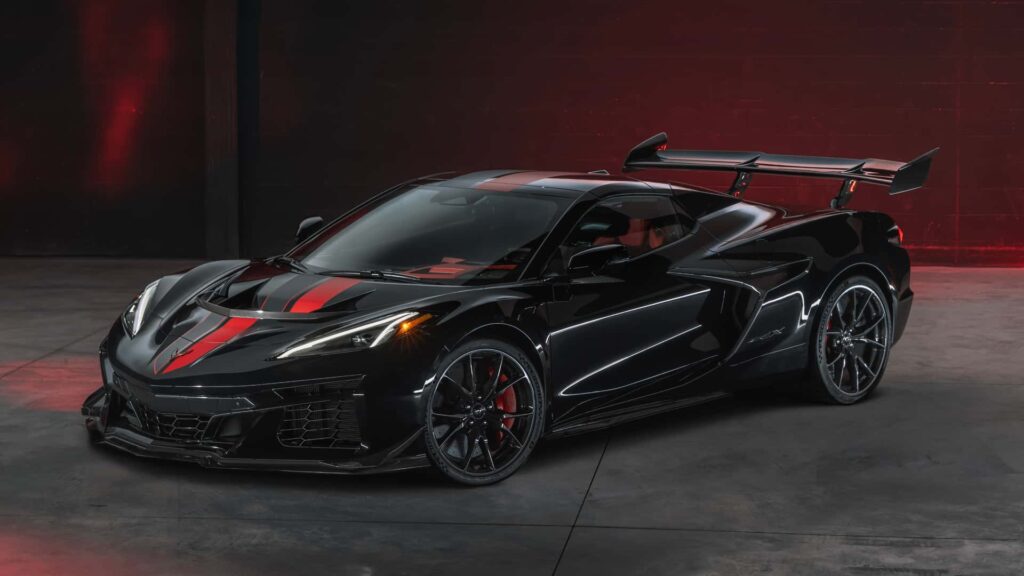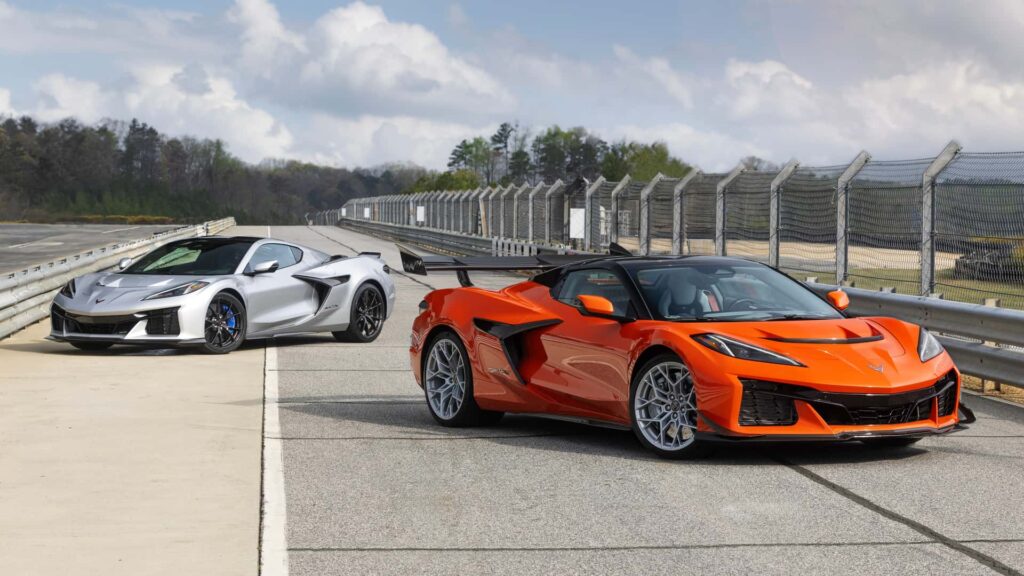
Chevrolet has been steadily turning up the heat with every iteration of the Corvette since the mid-engine Stingray made its debut back in 2020. Now, things have escalated dramatically with the arrival of the 2026 Corvette ZR1X.
This new flagship model combines the recently launched 5.5-litre Gemini V8 from the Corvette ZR1 with the hybrid system found in the E-Ray. The result is a staggering package of performance that looks set to shake the very foundations of the exotic supercar world, targeting the likes of the Porsche 911 GT3 and even the Bugatti Chiron.
According to Ken Morris, General Motors’ senior vice president, “This is the most revolutionary platform in Corvette history, supporting the widest range of American sports cars and delivering world-class performance at every level.”
Chevrolet is calling the ZR1X “a true American hypercar,” and based on the numbers, that doesn’t feel like a stretch. It produces a combined 1,250 PS (1,233 hp; 919 kW) and can launch from 0 to 60 mph in under 2 seconds. Top speed is rated at 231 mph (372 km/h), or 225 mph (362 km/h) if you go for the Carbon Aero package.
It builds on many of the innovations seen in the ZR1, including the new triple-screen cabin layout. Every version of the ZR1X comes fitted with the J59 braking package, which was previously only optional on the ZR1. Designed to resist fade even under sustained track use, the setup includes Alcon 10-piston front and 6-piston rear calipers with 16.5-inch carbon ceramic rotors all around. The system uses a unique construction of continuously woven carbon fibre threads.
The ZR1 already makes waves with its hand-built 5.5-litre Gemini V8 that develops 1,064 PS (1.050 hp; 782 kW) and 1.122 Nm (828 lb-ft) of torque. It features a flat-plane crankshaft, finger-follower valvetrain and a dry-sump oiling system. Chevrolet’s clever integration of the twin turbochargers into the exhaust manifold also plays a role in minimising lag.
Where the ZR1X steps it up is with its hybrid component, which adds another 186 PS (139 kW) and 197 nm (145 lb-ft) of instant torque. This system is an evolved version of the setup used in the E-Ray, still powered by a 1.9 kWh lithium-ion battery, but with upgraded components that allow it to deliver more torque and withstand higher loads.
As before, the V8 sends power to the rear wheels through an 8-speed dual-clutch transmission, while the front axle is driven by the hybrid system’s single-speed unit. Corvette chassis control engineer Cody Bulkley put it simply, “You can take advantage of the torque to dig you out of a corner.”
To help drivers tailor the hybrid experience, Chevrolet has introduced several new drive modes:
- Endurance Mode (via the “Charge+” button) adjusts how the battery stores energy during long sessions on track
- Qualifying Mode tunes everything for peak lap-time performance
- Push-to-Pass delivers maximum available power for brief bursts
There’s also a PTM Pro setting that maintains regenerative braking torque vectoring and front axle pre-control, even with traction and stability control turned off. This helps maximise traction on corner exits.
Just like the rest of the C8 range, the ZR1X will be offered in both coupe and convertible forms.

Customers can choose between a standard version more suited to touring, although still highly capable on track, or go for the ZR Performance Package. The base model runs on Michelin PS4S tyres and uses Magnetic Ride Control suspension, while the ZR version gets stiffer spring rates and sticky Michelin Pilot Cup ZR rubber.
Rumours have been swirling for years that Chevrolet would deliver something to force Europe’s elite to take notice, and the ZR1X certainly answers that call.

